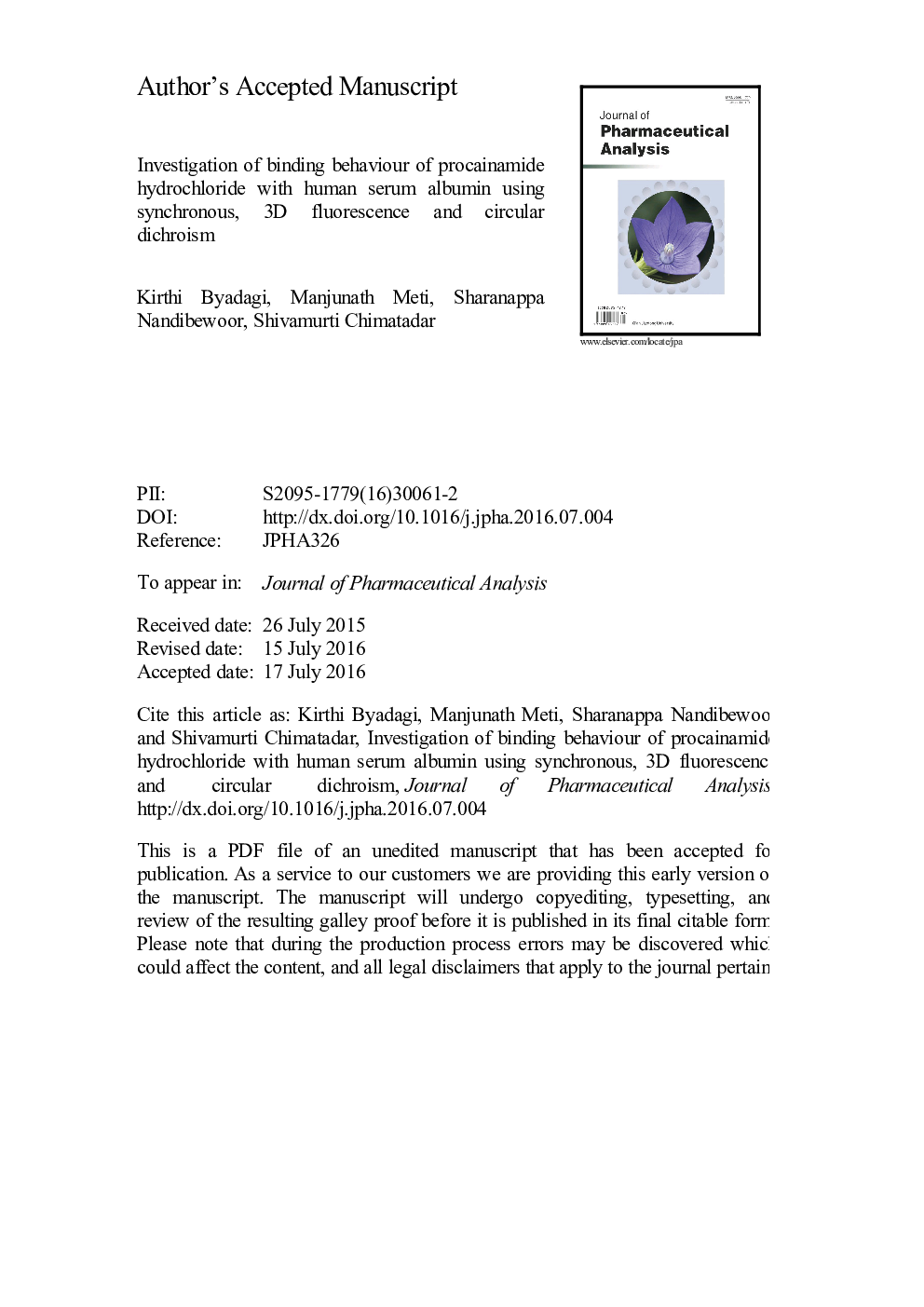| Article ID | Journal | Published Year | Pages | File Type |
|---|---|---|---|---|
| 8521268 | Journal of Pharmaceutical Analysis | 2017 | 29 Pages |
Abstract
Interaction of procainamide hydrochloride (PAH) with human serum albumin (HSA) is of great significance in understanding the pharmacokinetic and pharmacodynamic mechanisms of the drug. Multi-spectroscopic techniques were used to investigate the binding mode of PAH to HSA and results revealed the presence of static type of quenching mechanism. The number of binding sites, binding constants and thermodynamic parameters were calculated. The results showed a spontaneous binding of PAH to HSA and hydrophobic interactions played a major role. In addition, the distance between PAH and the Trp-214 was estimated employing the Förster's theory. Site marker competitive experiments indicated that the binding of PAH to HSA primarily took place in subdomain IIA (Sudlow's site I). The influence of interference of some common metal ions on the binding of PAH to HSA was studied. Synchronous fluorescence spectra (SFS), 3D fluorescence spectra and circular dichroism (CD) results indicated the conformational changes in the structure of HSA.
Related Topics
Health Sciences
Pharmacology, Toxicology and Pharmaceutical Science
Pharmaceutical Science
Authors
Kirthi Byadagi, Manjunath Meti, Sharanappa Nandibewoor, Shivamurti Chimatadar,
